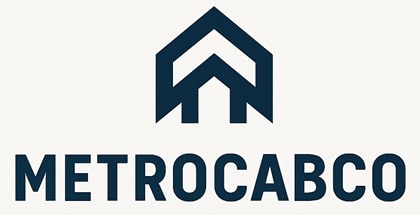To avoid becoming a ghost in generative search, businesses must enhance their online visibility and engagement. This requires optimizing content through strategic keyword usage and understanding audience preferences. Employing AI-driven algorithms and engaging multimedia can greatly improve user experience. Additionally, adapting strategies based on data analysis guarantees relevance and responsiveness to evolving demands. By focusing on these aspects, organizations can forge stronger connections with audiences and assert their presence in the digital landscape, leading to greater success.
Key Takeaways
- Optimize your content using relevant keywords to enhance visibility in generative search results.
- Regularly update and analyze your content strategies to stay competitive and relevant.
- Engage your audience through storytelling and interactive formats to create emotional connections.
- Utilize multimedia elements to enhance user experience and improve information retention.
- Stay informed on trends like AI-driven algorithms and voice search to adapt your strategies effectively.
Understanding Generative Search Technology
Generative search technology represents a significant advancement in how information is retrieved and processed. Unlike traditional search methods that rely on keyword matching, generative search employs sophisticated algorithms to understand context and intent.
Generative search revolutionizes information retrieval by utilizing advanced algorithms to grasp context and intent beyond mere keyword matching.
Also Read
This technology utilizes machine learning and natural language processing to generate more relevant and thorough results. By analyzing vast amounts of data, it can discern patterns and generate responses that align closely with user queries.
Generative search transforms the user experience, providing not just answers but also insights and connections between disparate pieces of information. As a result, it fosters a more engaging and informative interaction, enabling users to explore topics in depth rather than sifting through a list of links.
This evolution marks a pivotal shift in the information retrieval landscape.
The Importance of Content Optimization
Content optimization plays a vital role in enhancing online visibility by strategically incorporating relevant keywords.
This practice not only helps search engines index content more effectively but also fosters improved user engagement metrics.
Enhance Visibility Through Keywords
Effective keyword optimization plays an essential role in enhancing online visibility for businesses. By strategically selecting and integrating relevant keywords into their content, organizations can markedly improve their chances of ranking higher in search engine results.
This practice involves understanding user intent and identifying terms that potential customers frequently search for. Additionally, incorporating long-tail keywords allows for more targeted outreach, attracting a specific audience and increasing conversion rates.
Businesses should also pay attention to keyword placement within headings, meta descriptions, and throughout the body text to maximize effectiveness. Regularly updating and analyzing keyword performance can further refine strategies, ensuring sustained visibility in an ever-evolving digital landscape.
Ultimately, a focused keyword approach is vital for driving organic traffic and fostering brand recognition.
Improve User Engagement Metrics
Optimizing online content is vital for enhancing user engagement metrics. When content is tailored to meet user needs, it fosters increased interaction, such as longer time spent on pages and higher click-through rates.
By employing data-driven insights, content creators can identify which topics resonate most with their audience, allowing for targeted adjustments. Additionally, incorporating multimedia elements, such as images and videos, can capture attention and keep users engaged.
Regularly updating content guarantees relevance, encouraging repeat visits. Moreover, optimizing for mobile devices is imperative, as a significant portion of users access content via smartphones.
Ultimately, a strategic approach to content optimization not only boosts engagement metrics but also cultivates a loyal audience, vital for long-term success in the digital landscape.
Engaging Your Audience Effectively
Capturing an audience’s attention requires a strategic approach that transcends mere information delivery. Effective engagement involves understanding audience preferences, motivations, and behaviors. Tailoring content to resonate with these factors can greatly enhance interaction.
Utilizing storytelling techniques can create emotional connections, fostering a sense of relevance and urgency. Visual elements, such as images and videos, also play an important role in maintaining interest and reinforcing messages.
Encouraging participation through interactive formats, like polls or quizzes, invites audiences to contribute actively rather than passively consume information. Additionally, consistency in tone and messaging builds trust and familiarity, which are essential for sustained engagement.
Leveraging Keywords for Visibility
Harnessing the power of keywords can greatly enhance online visibility and attract the right audience. By strategically incorporating relevant keywords into website content, businesses can improve their search engine rankings and guarantee they appear in relevant search results.
It is essential to conduct thorough keyword research to identify terms and phrases that potential users are actively searching for. Long-tail keywords, in particular, can drive targeted traffic and improve conversion rates. Additionally, placing keywords in titles, headers, and meta descriptions can further optimize content for search engines.
Regularly updating and refining keyword strategies based on performance analytics is vital for maintaining visibility. By leveraging keywords effectively, brands can position themselves as authoritative sources and engage with their intended audience.
Utilizing Multimedia for Enhanced Engagement
Although text-based content remains important, utilizing multimedia can greatly enhance user engagement and retention. Incorporating images, videos, infographics, and interactive elements makes content more visually appealing and easier to digest.
Research indicates that users are more likely to remember information presented through visual means compared to text alone. Furthermore, multimedia can cater to various learning styles, reaching a broader audience. For instance, videos can succinctly explain complex concepts, while infographics can distill data into digestible formats.
Additionally, interactive content encourages users to participate actively, fostering a sense of community and involvement. By leveraging multimedia effectively, content creators can capture attention, boost interaction, and ultimately improve the overall user experience, ensuring their material stands out in a crowded digital landscape.
Building a Strong Online Presence
A robust online presence is essential for visibility in today’s digital landscape.
To achieve this, individuals and businesses should focus on optimizing their websites and actively engaging on social media platforms.
These strategies facilitate greater connection with audiences and enhance overall brand recognition.
Optimize Your Website
Optimizing a website is essential for establishing a strong online presence. A well-structured site enhances user experience, improves search engine rankings, and increases engagement.
Key elements of optimization include ensuring fast loading times, mobile responsiveness, and intuitive navigation. Additionally, high-quality content that incorporates relevant keywords can attract and retain visitors.
Implementing on-page SEO techniques, such as meta tags and alt text for images, further enhances visibility in search results. Regularly updating content keeps the site fresh and encourages repeat visits.
Analytics tools can help track user behavior, allowing for data-driven adjustments. Ultimately, a fully optimized website serves as the foundation for effective online visibility and can greatly impact a brand’s digital success.
Engage on Social Media
An optimized website lays the groundwork for a robust online presence, but engaging on social media amplifies visibility and fosters community interaction. Establishing a strong presence on platforms like Twitter, Instagram, and LinkedIn allows individuals and businesses to connect with their audience in real time. Regularly sharing valuable content can cultivate trust and encourage user engagement.
| Platform | Purpose | Best Practices |
|---|---|---|
| Quick updates, news sharing | Use hashtags, engage followers | |
| Visual storytelling | Post consistently, utilize stories | |
| Professional networking | Share insights, connect with industry leaders | |
| Community building | Create groups, host events | |
| TikTok | Creative content | Leverage trends, engage young audiences |
Analyzing and Adapting Your Strategy
Evaluating strategies in the context of generative search is essential for maintaining relevance and visibility. Organizations must regularly analyze their current approaches to identify strengths and weaknesses.
This process involves examining metrics such as engagement rates, content performance, and keyword effectiveness. By leveraging data analytics, companies can ascertain which strategies resonate best with their target audience and adjust accordingly.
Evaluating engagement rates and content performance is crucial for companies to refine strategies that resonate with their audience.
Adaptation may include refining content themes, optimizing for specific keywords, or enhancing user experience. Additionally, soliciting feedback from users can provide valuable insights into what works and what doesn’t.
Ultimately, a proactive approach to analyzing and adapting strategies guarantees that organizations remain competitive and effectively meet the evolving demands of their audience in the dynamic landscape of generative search.
Keeping up With Trends in Search Technology
As the landscape of search technology evolves, staying informed about the latest trends becomes essential for organizations aiming to enhance their visibility and engagement. Key advancements, such as AI-driven algorithms, voice search optimization, and personalized content delivery, are transforming user experiences. Organizations must adapt to these shifts to maintain relevance.
| Trend | Description | Impact on Engagement |
|---|---|---|
| AI-Driven Algorithms | Enhances search relevance | Increases user satisfaction |
| Voice Search | Allows for hands-free querying | Expands accessibility |
| Personalized Content | Tailors experiences to user behavior | Boosts conversion rates |
| Mobile Optimization | Guarantees seamless browsing on devices | Improves retention rates |
FAQ
What Is the Difference Between Generative Search and Traditional Search?
The difference between generative search and traditional search lies in their approaches; generative search creates new content based on queries, while traditional search retrieves existing information from databases, emphasizing retrieval over generation.
How Can I Measure the Effectiveness of My Content Optimization?
Like a sculptor chiseling marble, measuring content optimization effectiveness involves tracking engagement metrics, conversion rates, and user feedback. Analyzing these elements reveals a clearer picture of content performance and guides future improvements.
What Are Some Examples of Engaging Content for My Audience?
Engaging content examples include interactive quizzes, informative infographics, compelling storytelling, user-generated content, how-to videos, and relatable blog posts. These formats resonate with audiences, fostering connections and encouraging sharing, ultimately enhancing engagement and brand loyalty.
How Often Should I Update My Keywords for SEO?
The frequency of updating keywords for SEO depends on market trends and competition. Regular assessments, ideally every few months, help guarantee relevancy. Staying informed about industry changes can enhance visibility and engagement with the target audience.
What Multimedia Formats Work Best for Audience Engagement?
Studies indicate that incorporating video content increases audience engagement by 1200%. Infographics, podcasts, and interactive content also capture attention effectively, making diverse multimedia formats essential for enhancing audience interaction and sustaining interest in various platforms.
Conclusion
In summary, to thrive in the era of generative search, one must embrace content optimization, engage audiences dynamically, and leverage keywords strategically. By utilizing multimedia effectively, building a robust online presence, and analyzing performance rigorously, content creators can guarantee visibility and relevance. Furthermore, staying attuned to evolving trends in search technology is essential for ongoing success. Ultimately, it is the combination of these strategies that will prevent one from becoming a ghost in the digital landscape.













